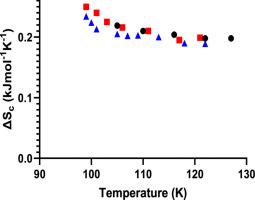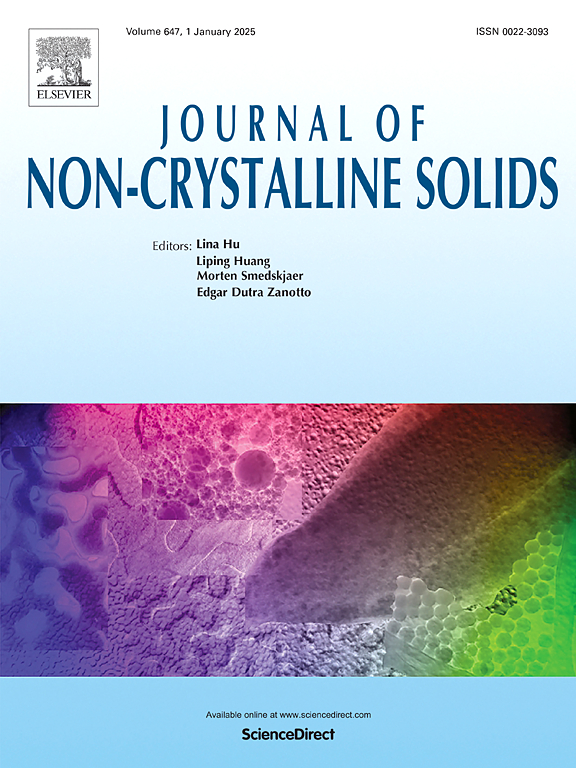Configuration entropy and non-Arrhenius behavior in the α relaxation of glassy dielectrics
IF 3.2
3区 材料科学
Q1 MATERIALS SCIENCE, CERAMICS
引用次数: 0
Abstract
Applying Eyring equation to experimental data for the α relaxation of glassy dielectrics shows the fundamental role of the activation entropy in the relaxation dynamics. The combination of Eyring equation and compensation law gives access to other important parameters, such as the compensation temperature and the absolute value of the configurational activation entropy, ΔSC, in the Arrhenius regime. The non linear behavior observed at low temperatures is explained by the time and temperature variation of the configurational activation entropy. We propose that this change corresponds to the rarefaction of free equilibrium states as T is lowered. A simple method is proposed to calculate ΔSC from the change of free energy in the non linear regime. The lowest temperature limit of the a relaxation is not known but it seems unlikely that it would be the VTF or the Kauzmann temperatures. Brief comments on the physical significance of these two parameters are made. It is also shown that relaxation times are not invariant, as sometime suggested

玻璃电介质 α 弛豫中的构型熵和非阿伦尼乌斯行为
将艾林方程应用于玻璃电介质α弛豫的实验数据显示了活化熵在弛豫动力学中的基本作用。结合艾林方程和补偿定律,可以获得其他重要参数,如阿伦尼乌斯体系中的补偿温度和构型活化熵 ΔSC 的绝对值。在低温下观察到的非线性行为可以用构型活化熵的时间和温度变化来解释。我们认为这种变化与 T 值降低时自由平衡态的稀释相对应。我们提出了一种简单的方法,通过非线性机制中自由能的变化来计算 ΔSC。弛豫的最低温度极限尚不清楚,但似乎不太可能是 VTF 或考兹曼温度。本文对这两个参数的物理意义进行了简要评述。研究还表明,弛豫时间并不像某些人认为的那样是不变的。
本文章由计算机程序翻译,如有差异,请以英文原文为准。
求助全文
约1分钟内获得全文
求助全文
来源期刊

Journal of Non-crystalline Solids
工程技术-材料科学:硅酸盐
CiteScore
6.50
自引率
11.40%
发文量
576
审稿时长
35 days
期刊介绍:
The Journal of Non-Crystalline Solids publishes review articles, research papers, and Letters to the Editor on amorphous and glassy materials, including inorganic, organic, polymeric, hybrid and metallic systems. Papers on partially glassy materials, such as glass-ceramics and glass-matrix composites, and papers involving the liquid state are also included in so far as the properties of the liquid are relevant for the formation of the solid.
In all cases the papers must demonstrate both novelty and importance to the field, by way of significant advances in understanding or application of non-crystalline solids; in the case of Letters, a compelling case must also be made for expedited handling.
 求助内容:
求助内容: 应助结果提醒方式:
应助结果提醒方式:


